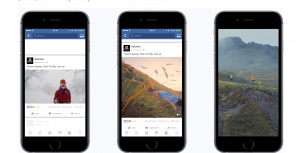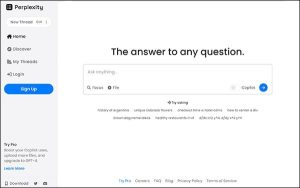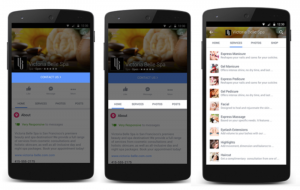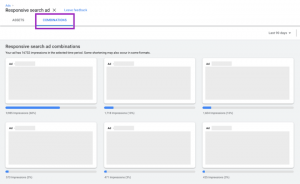The main thing that the best hiring managers look for is culture fit. They’ll check this both through a candidate’s resume and through the interview process.
Usually, on the resume, it’s a quick scan to make sure that you fit the job description and a general gut feeling based on what they see.
For the interview process, the main thing they’re looking for is culture fit. Some hiring managers do this properly, while others don’t have much of a process.
Having a solid hiring process and making sure that you’re hiring the best people will increase employee engagement across the entire company. But hiring managers focus on a few core things both with the resume and the interview.
Let’s go through both together.
What A Hiring Manager Looks For In A Resume
It’s important to understand that hiring managers receive hundreds of resumes, so there’s no way they could spend much time on them even if they wanted to.
The trick to creating a good resume is to make it easy to read, and keep it simple.
In 2012, The Ladders conducted a study to track the eye movements of recruiters as they looked at resumes. The study found that recruiters spend a total of six seconds looking at your resume.
Six seconds.

When recruiters were asked to rate which resumes were the best, they said the ones with less clutter and those that were formatted better were easier to scan.
In those six seconds that recruiters scan your resume, this is what they look at:
- Your name
- Current and previous job title and company
- Start and end dates for current and previous positions
- Education
Accounting For Bias In The Hiring Process
The biggest issue that hiring managers face is the bias that they ultimately can’t control. One of the biggest ones is confirmation bias.
Confirmation bias is the tendency to search for, interpret, or prioritize information in a way that confirms one’s beliefs or hypotheses.
Laszlo Bock, SVP of People at Google writes about confirmation bias and how it affects the interview process in his latest book Work Rules

He cites a study from 2000 by Tricia Pricket and Neha Gada-Jain, two psychology students at the University of Toledo, and their professor, Frank Berieri, who found that judgments made in the first 10 seconds of a job interview could predict the outcome of the interview.
In other words, most of what we think is “interviewing” is actually the pursuit of confirmation bias. Most interviews are a waste of time because 99.4 percent of the time is spent trying to confirm whatever impression the interviewer formed in the first ten seconds. “Tell me about yourself.” “What is your greatest weakness?” “What is your greatest strength?” Worthless.
Here are a few other examples of bias in the hiring process:
- One study found that managers of both sexes are twice as likely to hire a man as a woman.
- Another study showed that people attribute more intelligence and competence to taller, well-turned-out or otherwise good-looking people, and more likely to hire better looking people.
- Studies have shown that people with ‘white’ or ‘domestic’ names get more interest from employers than those with ‘black’ or ‘foreign’ names.
- Another research paper finds that when it comes to choosing job candidates, employers place a heavy emphasis on finding people who are similar to them, and whose company they enjoy.
Hiring Managers Should Be Using Structured Interviews
In 1998, researchers Frank Schmidt and John Hunter published a meta-analysis of 85 years of research, measuring 19 different assessment techniques and how they predict performance.
They found that unstructured job interviews were not good at predicting how someone would perform once they were hired.
They found that the best predictor of how someone would perform in a job is by giving them a sample test. This is where you give a candidate a piece of work, similar to what they should expect when they were on the job.
The problem is, many jobs don’t have a sample piece of work that you could give a candidate.
The second best predictor was both cognitive ability tests (like an IQ test) and structured interviews. The problem with most cognitive tests are that they’re biased towards white males.
A structured interview is where candidates are asked a consistent set of questions and they have clear criteria for evaluating the responses. There are two types of structured interviews: behavioral and situational.
Behavioral interviews look at past job performance (“Tell me about a time when…”) and situational interviews are hypothetical situations (“What would you do if…”). The insight into a candidate comes from how passionate their answers are.
The Best Hiring Managers Hire By Committee
Google is a great example of a company that hires by committee. This is done to remove any of the biases from the hiring manager.
After Google completes their 4 interviews (on average) the candidate has a final review with a hiring committee, consisting of senior managers and directors, where the final choice is made.
Zappos is another great example of a company that hires by committee. They take it a step further, with an incredible twist that ensures they’re hiring nice people.
When you’re selected for an interview at Zappos, if you live outside of Las Vegas, they’ll fly you in and pick you up from the airport in a shuttle bus, where they drive you to the Zappos office to spend a day interviewing and being immersed into their culture.
At the end of the day, everyone on the committee gets a say in how they felt about the candidate, but the twist is one of the members of the committee: the bus driver.
If the candidate was rude at all to the bus driver (“carry my bags!”) they don’t hire that person. The idea being that there’s never an excuse to be rude to someone, including the bus driver.
Sample Questions Hiring Managers Can Ask
Here are a few examples that hiring managers could use to test personality and make sure the candidate fits with their culture.
- How would your last supervisor describe you?
- What are you passionate about in your personal life?
- What types of hobbies do you enjoy outside of work?
- Can you tell me about a time that was stressful for you, and how you handled it?
- Describe the best boss you ever reported to.
- Describe a typical Saturday
- If you could work for any company in the world, who would it be?
- Where do you see yourself in five years?
I particularly like the last question. It’s not that important what a candidate says, it’s how they say it and how much excitement they show in their answer.
How We Measure Culture Fit
We do something pretty cool here at Officevibe when we interview someone and any hiring manager can feel free to use this technique as well.
We have our core values printed out on cards and one of our interview questions will consist of asking the candidate to order the cards in order of what they think is the most important value and then explain their answer. Again, it’s not so important what they say, it’s to see how they answer the question.
There have been several occasions where a candidate has said “they’re all equally important” or something along those lines, and we’ll remind them that they have to make a choice.
What Do You Look For As A Hiring Manager?
Using an employee engagement tool can help you understand what’s important to employees so you know what to look for as a hiring manager.
(213)
Report Post






